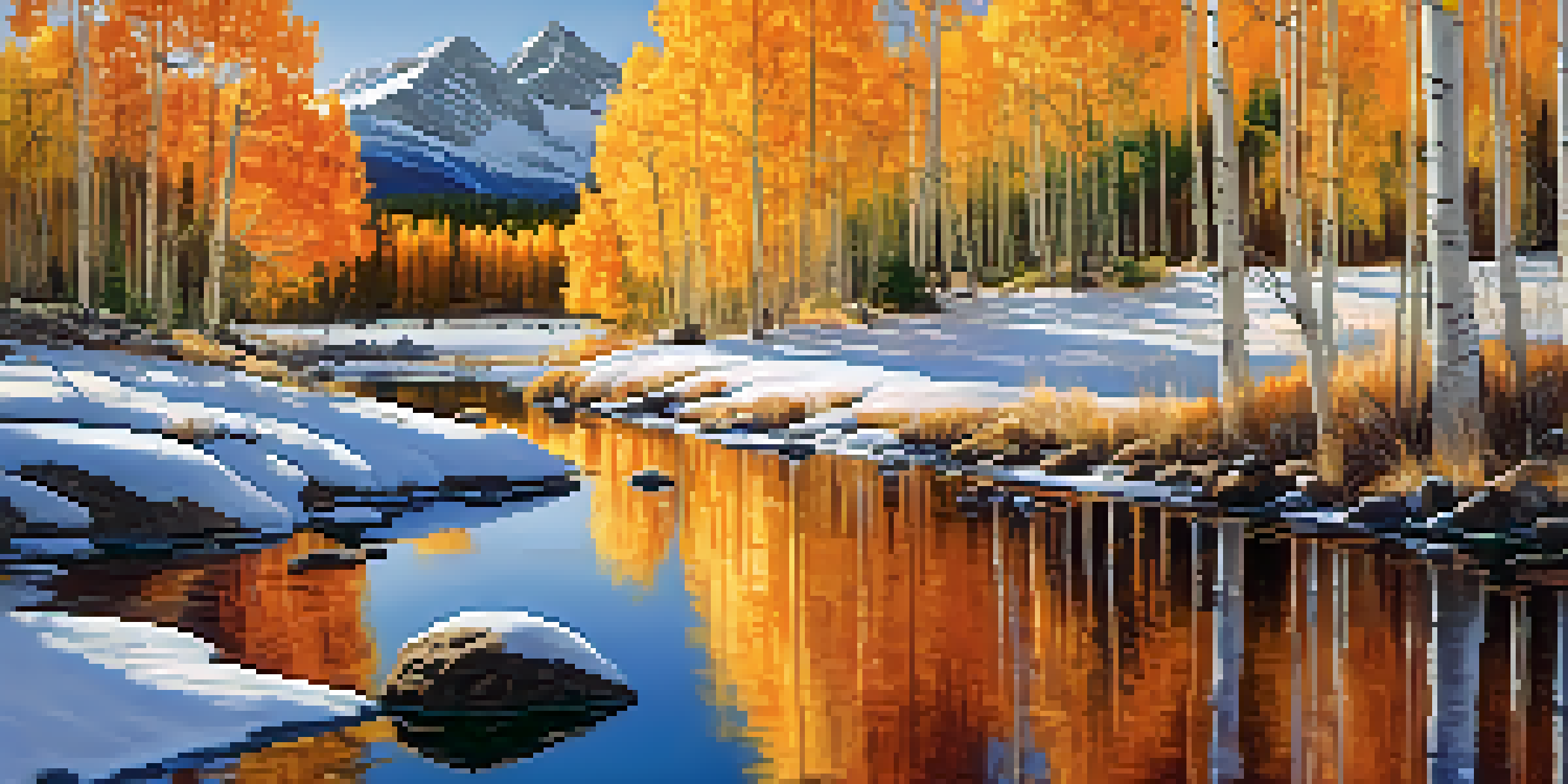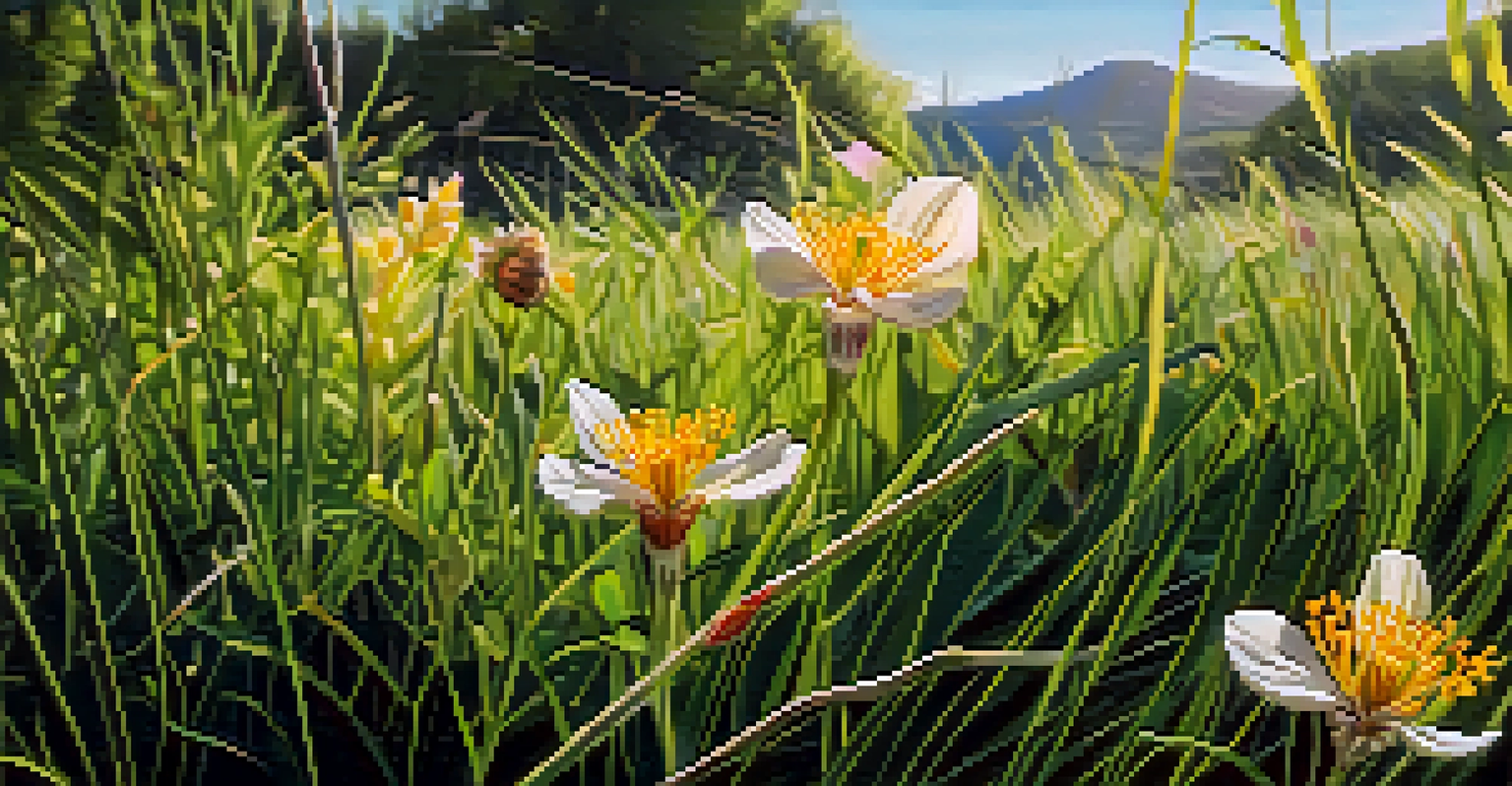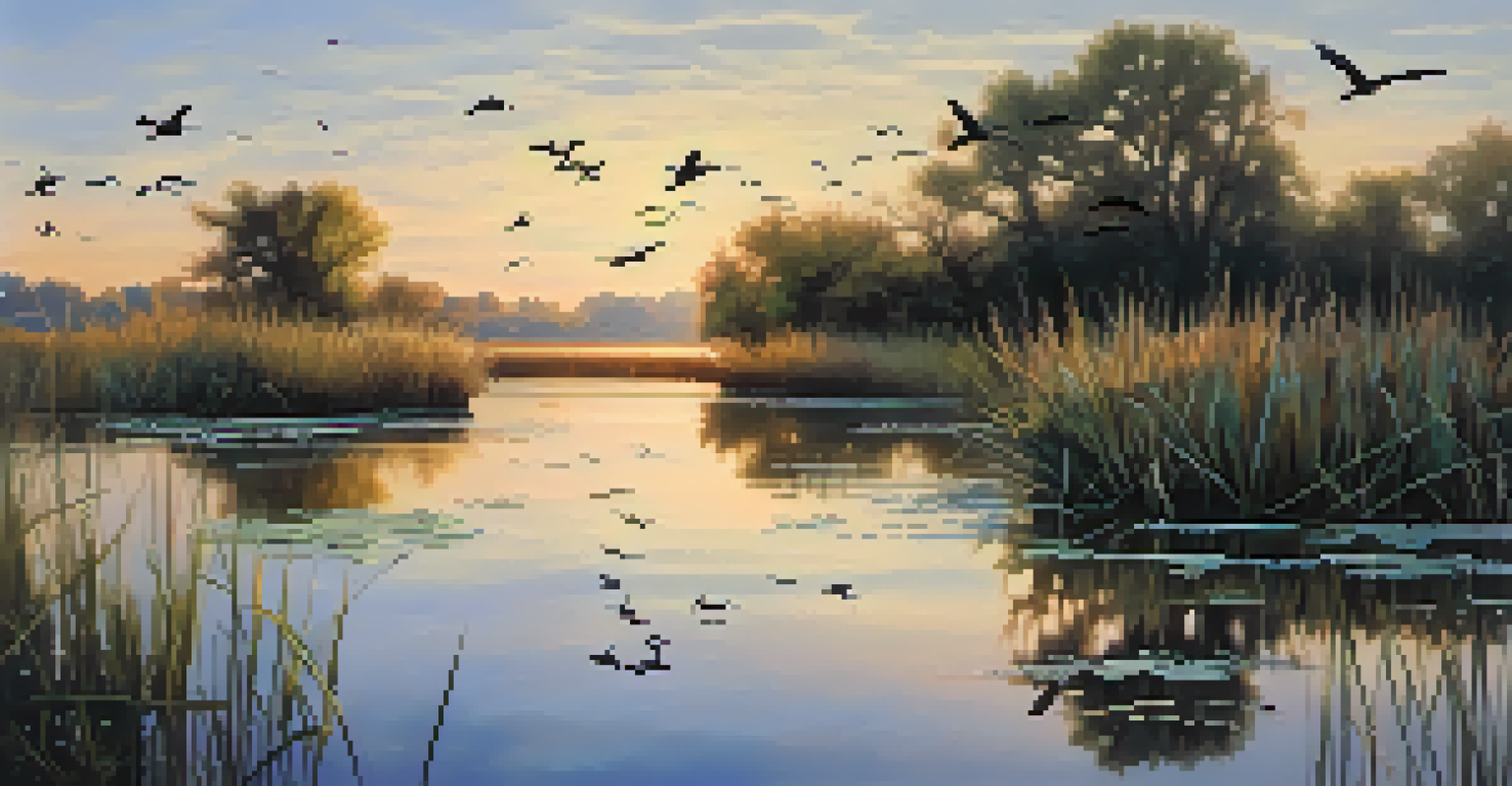Climate Change Impacts on Colorado's Ecosystems and Wildlife

The Changing Climate: An Overview of Colorado's Challenges
Colorado's climate is undergoing significant changes, marked by rising temperatures and altered precipitation patterns. These shifts are not just numbers on a chart; they directly affect the ecosystems and wildlife that call this state home. For instance, the state has seen a notable increase in average temperatures, which impacts everything from plant growth to animal migration patterns.
In nature, nothing exists alone.
As winters become milder and snowpack decreases, the delicate balance of Colorado's ecosystems is thrown off-kilter. Wildlife species that have adapted to specific seasonal cues may struggle to cope with these changes. This not only affects their survival but also disrupts the intricate relationships they have with their habitats and each other.
Understanding the broader implications of climate change is crucial for conservation efforts. By recognizing the challenges ahead, we can better prepare and implement strategies to protect Colorado's unique wildlife and ecosystems.
Impact on Wildlife Migration Patterns in Colorado
Wildlife migration is an essential aspect of many species' survival, allowing them to find food, breed, and adapt to changing environments. However, climate change is altering these traditional migration routes, with many species arriving at their destinations either too early or too late. This can lead to mismatches in timing with food availability, creating a ripple effect throughout the ecosystem.

For example, birds migrating to Colorado may find that the insects they rely on for food are not yet present due to warmer spring temperatures. Similarly, large mammals like elk and deer may struggle to find suitable habitats as they move to higher elevations, where cooler temperatures are more favorable. These disruptions can lead to increased competition for resources and greater vulnerability to predators.
Climate Change Affects Wildlife
Rising temperatures and altered weather patterns disrupt traditional migration routes and food availability for various species in Colorado.
The consequences of these shifts are profound, not only affecting the animals themselves but also the entire ecosystem. When one species is out of sync, it can impact everything from plant life to other animals, highlighting the interconnected nature of Colorado's wildlife.
Changing Habitats: A Threat to Biodiversity
As temperatures rise and precipitation patterns shift, Colorado's habitats are undergoing significant changes. Forests, grasslands, and wetlands are all susceptible to the effects of climate change, leading to a loss of biodiversity. Species that are unable to adapt to these new conditions may face extinction, while others may invade and disrupt established ecosystems.
The greatest threat to our planet is the belief that someone else will save it.
Take, for instance, the iconic aspen forests of Colorado. These trees are sensitive to temperature changes and are at risk of declining due to warmer conditions. As these forests change, the wildlife dependent on them for shelter and food also faces dire consequences, resulting in a cascading effect throughout the ecosystem.
Preserving biodiversity is essential for maintaining healthy ecosystems. By protecting a variety of species and their habitats, we can foster resilience against climate change and ensure that Colorado's natural beauty endures for generations to come.
The Effects of Drought on Colorado's Ecosystems
Drought is becoming an increasingly common phenomenon in Colorado, leading to significant stress on water resources and ecosystems. Reduced water availability affects everything from plant growth to animal behavior, as species compete for dwindling resources. The consequences can be dire for both wildlife and humans alike, as ecosystems become imbalanced.
For example, aquatic ecosystems are particularly vulnerable during droughts. Fish populations may decline due to low water levels and increased water temperatures, which can lead to oxygen depletion. Additionally, terrestrial animals that rely on these water sources for drinking and cooling will find themselves at risk, leading to increased mortality rates during hot, dry spells.
Biodiversity at Risk in Colorado
Habitat changes due to climate change threaten numerous species, leading to potential extinctions and a loss of ecosystem balance.
Addressing the impacts of drought requires a multifaceted approach, focusing on water conservation and habitat restoration efforts. By understanding the challenges posed by drought, we can create a more sustainable future for Colorado's ecosystems and the wildlife that inhabit them.
Invasive Species: A Growing Concern
Climate change creates opportunities for invasive species to thrive in new environments, posing a significant threat to Colorado's native wildlife. As temperatures rise and habitats shift, invasive species can outcompete local flora and fauna, leading to declines in biodiversity. This has serious implications for the health of ecosystems and the species that rely on them.
One notable example is the invasion of cheatgrass, which has spread rapidly across Colorado's grasslands. This invasive plant not only outcompetes native grasses but also alters fire regimes, making wildfires more frequent and intense. As native species struggle to survive, the entire ecosystem faces disruption, affecting everything from soil health to wildlife populations.
Combating invasive species requires ongoing monitoring and management efforts. By educating the public and promoting responsible land use practices, we can work towards preserving Colorado's native ecosystems and wildlife from the threats posed by invaders.
The Role of Conservation Efforts in Mitigating Impacts
Conservation efforts play a vital role in addressing the impacts of climate change on Colorado's ecosystems and wildlife. By implementing strategies such as habitat restoration, species monitoring, and community engagement, we can enhance the resilience of our natural environments. These efforts can help mitigate the effects of climate change and protect vulnerable species from further decline.
Organizations and communities across Colorado are taking action to conserve wildlife habitats and promote biodiversity. For example, local initiatives aim to restore wetlands and riparian areas, which serve as crucial habitats for a wide variety of species. By fostering healthy ecosystems, we can create a buffer against the adverse effects of climate change.
Community Action for Conservation
Engaging local communities in conservation efforts fosters a sense of responsibility and supports initiatives to protect Colorado's ecosystems.
Moreover, educating the public about the importance of conservation is essential for fostering a culture of stewardship. When people understand the value of protecting our natural resources, they are more likely to support initiatives that benefit both wildlife and the environment.
Community Engagement: The Key to a Sustainable Future
Community engagement is a powerful tool for combating climate change impacts on ecosystems and wildlife. By involving local communities in conservation efforts, we can foster a sense of ownership and responsibility toward the natural environment. This engagement not only encourages sustainable practices but also builds a network of support for wildlife and habitat preservation.
For instance, many organizations host volunteer events that allow community members to participate in habitat restoration projects, such as tree planting or invasive species removal. These hands-on experiences help people connect with their natural surroundings and understand the challenges faced by local wildlife. As individuals become more invested in their environment, they are likely to advocate for policies that protect it.

Ultimately, a collaborative approach is essential for achieving long-term success in addressing climate change. By working together, communities can drive positive change and create a more sustainable future for Colorado's ecosystems and wildlife.